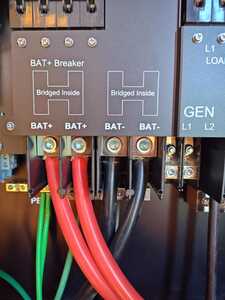I've been fighting with this intermittent problem for some time, exchanged emails for awhile with signature solar who i bought the 18kpv from and the only thing we've been able to come up with is that it doesnt make any sense. My pv array only outputs a little over 200 volts so well within the limits of the inverter. For the last week or so it had been problem free, and silly me saw that there was a firmware update available and figured I'd update. The problem returned with a vengeance. I am running a little off grid system for my grandparents camper, 1 inverter 2 batteries, and a small for now 1600 watt pv array. The only load is the outlet for the camper. Even without the pv turned on it throws this fault almost immediately after i plug in the camper. Thankfully my grandparents winter over elsewhere so I can work on this without disrupting them, I am out of ideas. What could possibly make the inverter think that the pv voltage is too high with a pv array that only puts out 200 volts and when the pv array isnt even turned on? The tech mentioned that grounding the pv panels to the inverter can cause issues and they're not grounded to the inverter, they are grounded about 20 feet from the inverter with their own ground rod. As far as they could see the wiring was fine and the inverter settings were fine. There is a ground going from a ground rod to the inverter.













